1. Introduction
2. Design Philosophy: Beyond the Ghost Bat
-
Sea-Skimming Mastery: Optimized for ultra-low-altitude flight, leveraging ground effect physics to enhance fuel efficiency and stealth.
-
Unparalleled Range: Achieving up to 5,500 nautical miles (10,186 km) of operational range through hybrid propulsion, advanced aerodynamics, and in-flight refuelling capabilities (including autonomous drone to drone refuelling).
-
Stealth Superiority: Minimizing radar, infrared, and acoustic signatures through innovative shaping, materials, and electronic warfare systems.
-
Autonomy and Swarming: AI-driven coordination, sensor fusion, and decision-making for independent or networked operations.
3. Airframe and Aerodynamics: Engineering for Excellence
3.1. Advanced Aerodynamics
-
Optimized Wing Design: Shorter, robust wings enhance stability during sea-skimming and ground-effect operations. Winglets are retractable for high-altitude efficiency and deployed for low-altitude stability.
-
Morphing Surfaces: Adaptive wing and control surfaces optimize performance for speed, maneuverability, or efficiency based on mission requirements.
-
Active Flow Control: Integrated actuators and sensors dynamically adjust airflow to minimize drag and turbulence.
3.2. Sea-Skimming Excellence
3.3. Fuel Efficiency and Stability
-
Drag Reduction: The compressed cushion of air between the wings and the surface significantly reduces drag during low-altitude flight. This ground effect increases fuel efficiency by 20 – 30%, extending operational range while conserving resources for critical mission phases.
-
Stability Systems: Flying at ultra-low altitudes over dynamic ocean surfaces requires advanced stabilization. The Vanguard employs gyroscopic stabilization and real-time AI adjustments to counter turbulence caused by waves or wind, ensuring smooth, precise flight even in challenging conditions.
3.4. Why Sea-Skimming Enhances Stealth
-
Radar Masking in Surface Clutter: Radar systems, particularly at medium to long ranges, struggle to distinguish the Vanguard from natural surface clutter caused by waves and reflections. By blending into this radar noise, the Vanguard becomes nearly invisible to traditional detection systems.
-
Ground Effect Physics and Reduced Radar Cross-Section (RCS): Ground effect subtly alters radar wave interactions with the airframe, further reducing its effective RCS. This stealth advantage is compounded by radar-absorbent materials and the Vanguard’s advanced shaping.
-
Minimized Detection by High-Frequency Radars: High-frequency radars designed for low-altitude detection are limited by the curvature of the Earth and the radar horizon. Flying below this threshold effectively removes the Vanguard from their detection envelope, making it nearly undetectable.
-
Infrared and Visual Suppression in Sea-Skimming Mode: Thermal and optical detection systems face significant challenges due to masking effects from the ocean’s heat signature and surface reflections. The Vanguard’s infrared suppression systems and adaptive electrochromic skin amplify these natural advantages, ensuring it remains undetectable to both radar and optical tracking systems.
3.5. High-Speed and High-Altitude Versatility
-
Supersonic Cruise: Optimized for Mach 1.2 to 1.5 for rapid deployment.
-
Stealth Loitering: Efficient subsonic speeds for extended surveillance missions.
4. Propulsion: The Heart of Endurance and Power
-
Variable-Cycle Engine: Adapts between low-bypass (for speed) and high-bypass (for efficiency) modes, enhancing versatility.
-
Boundary Layer Ingestion (BLI): Reduces drag by using air from the boundary layer around the fuselage, improving propulsion efficiency.
-
Hybrid-Electric Assist: Combines advanced jet propulsion with electric systems for low-noise loitering. Incorporates regenerative braking for energy recovery during flight maneuvers.
5. Unmatched Operational Range: How 5,500 Nautical Miles (10,186 km) is Achieved
5.1. Baseline Range
5.2. Sea-Skimming Efficiency for Fuel Efficiency Gains
-
Ground Effect Efficiency and Drag Reduction: By flying within the ground effect zone (10 – 20 meters above the ocean surface), the Vanguard reduces drag by up to 25%. The compressed air cushion under the wings reduces induced drag by up to 25%. This dramatically lowers fuel consumption during cruise, extending operational duration for missions such as loitering and reconnaissance.
-
Fuel Conservation: The reduced drag translates directly into longer flight times, with efficiency improvements contributing 5 – 6 additional hours of endurance.
-
Range Impact: Fuel efficiency improves by 20 – 30%, increasing operational range by +500 nautical miles. Subtotal: 2,500 nautical miles (4,630 km).
5.3. Hybrid-Electric Propulsion
-
Electric-Boost Mode: The hybrid-electric system powers auxiliary phases of flight (e.g., loitering or ISR missions) without relying entirely on jet propulsion, preserving fuel for high-demand segments of the mission.
-
Energy Recovery: Regenerative systems capture energy during deceleration, glide, or turbulence stabilization, using it to power critical onboard systems such as avionics, sensors, and electronic warfare modules. This reduces fuel consumption by the main engines.
5.4. Variable-Cycle Engine Technology
-
Efficient Cruise Mode: The variable-cycle engine operates in a high-bypass mode during long, subsonic cruises, optimizing fuel efficiency for extended flight.
-
Adaptive Performance: The engine adjusts to mission requirements, providing high thrust when needed while conserving fuel during low-power phases.
5.5. Advanced Power Management
-
Energy-Dense Batteries: Incorporating next-generation solid-state batteries and supercapacitors, the Vanguard efficiently powers avionics, communications, and sensors without relying solely on jet engines.
-
Smart Energy Distribution: AI-driven power management ensures critical systems operate at maximum efficiency, reducing overall energy waste and prolonging operational time.
5.6. Endurance Justification: Enhanced Contribution Breakdown
5.6.1. Sea-Skimming Efficiency
-
Drag Reduction: Leveraging ground effect physics reduces induced drag by 25%.
-
Fuel Efficiency Gain: Enhances fuel economy by 20 – 30%, adding 500 nautical miles (926 km) to the baseline range.
-
Cumulative Range: 2,500 nautical miles (4,630 km).
5.6.2. Hybrid-Electric Propulsion
-
Electric-Boost Mode: Reduces reliance on jet propulsion during loitering and ISR missions.
-
Energy Recovery: Regenerative braking captures energy for avionics and sensors, conserving fuel for other phases.
-
Fuel Savings: Adds 1,000 nautical miles (1,852 km).
-
Cumulative Range: 3,500 nautical miles (6,482 km).
5.6.3. Variable-Cycle Engine Technology
-
Efficient Cruise Mode: High-bypass operation minimizes fuel consumption during subsonic flight.
-
Adaptive Performance: Provides thrust efficiency for different mission profiles.
-
Fuel Economy: Contributes an additional 750 nautical miles (1,390 km).
-
Cumulative Range: 4,250 nautical miles (7,872 km).
5.6.4. Advanced Power Management
-
Energy-Dense Batteries: Next-generation solid-state batteries reduce dependency on jet propulsion.
-
Smart Distribution: AI-driven systems optimize energy usage for avionics, sensors, and communication.
-
Fuel Conservation: Adds another 1,250 nautical miles (2,314 km).
-
Final Cumulative Range: 5,500 nautical miles (10,186 km).
5.6.5. Key Metrics Revisited:
-
Baseline Range: 2,000 nautical miles (3,704 km)
5.6.6. Additional Contributions:
-
Sea-Skimming Efficiency: +500 nm (926 km)
-
Hybrid-Electric Propulsion: +1,000 nm (1,852 km)
-
Variable-Cycle Engine: +750 nm (1,390 km)
-
Power Management Systems: +1,250 nm (2,314 km)
5.6.7. Endurance Justification
5.7. Conclusion
-
Fuel efficiency from Sea-skimming operations.
-
Hybrid-electric propulsion and regenerative energy systems.
-
Variable-cycle engine optimization for long-range missions.
-
Advanced power management for auxiliary systems.
11.5. Performance Metrics: Pushing Boundaries
-
Range 2,000 nm (3,704 km)
-
Stealth RCS Low
-
Altitude 40,000 ft (12,192 m)
-
Payload ~3,000 lbs (1,360 kg)
-
Endurance ~20 hours
-
5,500 nm (10,186 km)
-
Stealth RCS Ultra-Low (RAM & Metamaterials)
-
50,000 ft (15,240 m)
-
Payload~ 4,500 lbs (2,041 kg)
-
Endurance ~ 40 hours (hybrid propulsion)
6. Materials and Stealth: A Ghost in the Sky
6.1. Radar Stealth
-
Faceted Shaping: Smooth, faceted surfaces scatter radar waves unpredictably.
-
Radar-Absorbent Materials (RAM): Cutting-edge metamaterials and carbon nanotube coatings absorb radar waves across a broad frequency spectrum.
6.2. Infrared Suppression
-
Exhaust Cooling: Masked exhaust ducts and active cooling systems blend thermal emissions with ambient air.
-
Low-Heat Materials: Advanced composites dissipate heat effectively.
6.3. Acoustic and Visual Stealth
-
Silent Propulsion: Advanced fan blade designs reduce engine noise.
-
Adaptive Camouflage: Electrochromic skin adjusts to match the surrounding environment, including ocean surfaces during sea-skimming.
7. Payload Capacity Enhancements
7.1. Structural Reinforcement Without Weight Penalty
-
Lightweight Advanced Composites: The Vanguard employs carbon nanotube-infused composites, a material innovation that combines exceptional strength with low density. This allows the airframe to support heavier payloads while minimizing weight penalties. These materials also provide enhanced durability under stress, ensuring the aircraft maintains structural integrity during high-stress combat or long-duration missions.
-
Optimized Internal Design: The internal payload bays are re-engineered for maximum capacity and efficiency. By refining the layout and improving weight distribution, the Vanguard can accommodate larger precision munitions, electronic warfare pods, or multi-mission sensor packages without compromising stability.
7.2. Improved Wing Loading and Aerodynamic Stability
-
Morphing Wing Technology: The Vanguard’s adaptive wing surfaces dynamically optimize lift-to-drag ratios based on payload weight and mission requirements. This minimizes aerodynamic penalties and ensures consistent flight performance even under heavier loads.
-
Active Flow Control: Real-time adjustments to airflow over the wings enhance stability and reduce drag during takeoff, cruise, and maneuvering with heavier payloads. This technology ensures the Vanguard remains efficient and responsive, regardless of the mission profile.
7.3. Enhanced Propulsion Power
-
The Vanguard’s variable-cycle engine and hybrid-electric assist provide the additional thrust required to handle increased payload weights without compromising efficiency during cruise phases. This ensures mission readiness for high-load configurations while maintaining the endurance and stealth necessary for extended operations.
7.4. Conclusion
8. Stealth Superiority Justification
8.1. Radar Stealth: Ultra-Low Radar Cross-Section (RCS)
-
Advanced Shaping: The Vanguard’s airframe incorporates smooth, faceted surfaces and carefully angled edges to scatter incoming radar waves unpredictably, minimizing reflections back to the source.
-
Flush Antennas and Sensors: Radar antennas and communication equipment are embedded into the airframe, eliminating detectable protrusions that could compromise stealth.
-
Radar-Absorbent Materials (RAM): Cutting-edge RAM coatings absorb radar waves across a wide frequency spectrum. Metamaterials: The Vanguard employs metamaterials designed to bend and deflect electromagnetic waves, further reducing radar returns.
-
Ground Effect Masking: When operating in sea-skimming mode, the Vanguard exploits radar clutter generated by the ocean’s surface to effectively blend into environmental noise. This drastically reduces detectability in contested areas.
8.2. Infrared Suppression
-
Exhaust Cooling Systems: The Vanguard features masked exhaust outlets that mix hot engine emissions with cool ambient air, significantly reducing thermal contrast. Heat Dissipation: Heat sinks integrated into the airframe redirect thermal energy into airflow, blending it with environmental temperatures.
-
Low-Emissivity Coatings: Specialized coatings on the airframe reduce the amount of infrared radiation emitted, making it harder to detect with thermal imaging systems.
-
Sea-Skimming Advantage: When flying close to the ocean, the Vanguard’s low altitude minimizes its thermal signature by blending with the ocean’s natural heat signature, making infrared targeting nearly impossible.
8.3. Acoustic Stealth
-
Silent Propulsion: The Vanguard’s advanced variable-cycle engine operates with noise-dampening technology, including precision-engineered fan blades and insulated engine housings to reduce sound emissions. Hybrid-Electric Boost: During low-speed loitering, hybrid-electric assist systems enable near-silent operation by bypassing traditional jet propulsion.
-
Structural Vibration Dampening: Gyroscopic stabilizers and advanced airframe materials minimize vibrations that could produce detectable acoustic signatures.
8.4. Visual and Operational Stealth
-
Adaptive Camouflage: The Vanguard’s electrochromic skin can adjust its appearance to match the surrounding environment, such as the ocean during sea-skimming missions or the sky at high altitudes. Light-Absorbing Coatings: These coatings minimize reflection under daylight, dusk, or low-light conditions, reducing visual detection risk.
-
Terrain Masking: By flying at ultra-low altitudes, the Vanguard avoids line-of-sight detection by radar, infrared, or optical systems, particularly in coastal or mountainous regions.
8.5. Conclusion
9. Autonomy and AI: Smarter than Ever
-
Real-Time Sensor Fusion: Integrates radar, lidar, infrared, and optical data for a comprehensive operational picture.
-
Autonomous Decision-Making: Predictive algorithms optimize flight paths and evade threats. Swarm logic enables coordination with other drones for dynamic mission roles.
-
Fault Recovery: Detects and mitigates system failures in real time, ensuring mission continuity.
10. Mission Flexibility: The Swiss Army Knife of UCAVs
10.1. Surveillance and Reconnaissance
-
Range: With up to 5,500 nautical miles, the Vanguard can conduct deep-penetration reconnaissance in contested regions.
-
Persistent Loitering: Hybrid propulsion allows extended missions over key targets.
10.2. Combat Operations
-
Payload Versatility: Internal bays for precision munitions, electronic warfare pods, and reconnaissance equipment. Optional external hardpoints for heavier loads in non-stealth missions.
-
Targeting Precision: AI-driven targeting systems ensure unparalleled accuracy.
10.3. Electronic Warfare and Communications
-
Electronic Jamming: Disrupts enemy radar and communications systems.
-
Quantum-Secure Networking: Ensures unbreakable communications with allied forces.
11. Operational Reach and Strategic Deployment
11.1 Rationale for Deployment Point Selection
-
Cover strategic threat areas (Russia, China, Arctic, and Pacific).
-
Overlap with high-value regions (Europe, Middle East, South Asia, and Africa).
-
Avoid exclusions such as deployment within Russia, China, India, the Middle East, Venezuela, or Africa.
-
Maintain access in neutral or allied territories for logistical sustainability and operational security.
11.2 Deployment Points along “Ring of Artificial Intelligence Hope, Power, Freedom & Fire”
-
Canada: Arctic dominance, North America, and Pacific integration.
-
Norway: Arctic, North Atlantic, and Northern European coverage.
-
Sweden: Enhanced Northern and Central European coverage.
-
Switzerland: Central Europe, Southern Europe, and Middle East adjacency.
-
Poland: Baltic States, Eastern Europe, and Russia’s western flank.
-
Romania: Black Sea, Eastern Europe, and southern Russia.
-
Japan: North Pacific, East Asia, and South China Sea
-
South Korea: East Asia, Korean Peninsula, and South China Sea..
-
Australia: Southern Pacific and Indo-Pacific region.
-
Hawaii (USA): Central Pacific hub, bridging North America and Asia.
-
Argentina: Southern Atlantic, South America, and Antarctic reach.
-
Alaska (USA): Strategic coverage of Arctic, North Pacific, and Russia.
-
New Zealand: Southern Pacific and Antarctic operations.
11.3 Strategic Deployment Zones
-
Primary Coverage: Arctic Ocean, North Pacific, North America, and Russian Arctic.
-
Advantages: Key Arctic access node for monitoring Russian activity. Supports Pacific operations and allied defense in Asia (Japan, South Korea). Logistics hub for North American defense and missile systems.
-
Challenges: Extreme weather conditions may affect operational continuity.
-
Primary Coverage: Arctic Ocean, North Atlantic, and northern Russia.
-
Advantages: Overlaps with Canada, Sweden and Finland for Arctic redundancy. Strategic NATO position for northern European defense.
-
Challenges: Limited reach into southern Europe; relies on overlap from Switzerland and Poland.
-
Primary Coverage: Northern Europe, Central Europe, and Baltic Sea.
-
Advantages: Enhances coverage of the Baltic Sea region, overlapping with Norway and Poland. Stable NATO-aligned location for Northern European operations.
-
Challenges: Geographic positioning does not reach southern Europe; relies on Switzerland and Romania.
-
Primary Coverage: Central Europe, Southern Europe, and Middle East adjacency.
-
Advantages: Secure, neutral location with robust defenses. Complements Poland and Romania for full European coverage. Provides a base for southern missions into Africa and the Middle East.
-
Challenges: Logistical constraints due to Switzerland’s neutrality policies.
-
Primary Coverage: Eastern Europe, Baltic States, and western Russia.
-
Advantages: Key proximity to Russia’s western borders ensures rapid response. Overlaps with Norway and Romania for seamless European coverage.
-
Challenges: High geopolitical tensions may limit operational flexibility.
-
Primary Coverage: Black Sea, Eastern Europe, and southern Russia.
-
Advantages: Critical for monitoring Black Sea naval activities. Reinforces NATO’s eastern flank.
-
Challenges: Proximity to volatile regions may increase security risks.
-
Primary Coverage: East Asia, Korean Peninsula, and South China Sea.
-
Advantages: Reinforces Pacific operations with overlap from Japan. Provides critical proximity to China and North Korea.
-
Challenges: High geopolitical tensions due to proximity to adversaries.
-
Primary Coverage: North Pacific, East Asia, and South China Sea.
-
Advantages: Strategic reach into China and North Korea. Key node for Pacific operations.
-
Challenges: High regional tension and geographic isolation.
-
Primary Coverage: Southern Pacific, Indo-Pacific, and Southeast Asia.
-
Advantages: Anchors Pacific coverage, complementing Japan. Stable allied territory with minimal regional threats.
-
Challenges: Distance from other nodes limits redundancy.
-
Primary Coverage: Central Pacific, bridging North America and Asia.
-
Advantages: Ensures continuity of coverage between North America and Asia. Strengthens Pacific monitoring and missile defense systems.
-
Challenges: Limited ability to directly oversee Arctic or European threats.
-
Primary Coverage: Southern Atlantic, South America, and Antarctic reach.
-
Advantages: Key position for South Atlantic operations and Antarctic monitoring. Supports missions in the southernmost hemisphere.
-
Challenges: Limited overlap with Pacific and Northern Hemisphere operations.
-
Primary Coverage: Arctic, North Pacific, and Russian Far East.
-
Advantages: Proximity to Russia’s Arctic and Pacific regions enhances responsiveness. Supports Canadian Arctic operations.
-
Challenges: High logistical demands due to remote location.
-
Primary Coverage: Southern Pacific and Antarctic operations.
-
Advantages: Complements Australia’s coverage for robust southern Pacific monitoring. Stable allied territory with minimal threats.
-
Challenges: Geographic isolation limits overlap with other nodes.
-
Redundancy and Overlap: Points like Canada, Norway, Sweden and Finland ensure Arctic dominance with overlapping coverage, reducing vulnerabilities.
-
Strategic Nodes: Switzerland and Poland provide critical central and eastern European coverage.
-
Geopolitical Stability: Locations like Australia, New Zealand, and Hawaii ensure stable bases in allied territories.
-
Global Reach: Argentina and Alaska extend coverage to the southernmost regions and Russian Far East.
-
Critical Updates: Including Norway, New Zealand and Argentina ensures true global coverage while respecting geopolitical constraints.
11.4. Pros and Cons
-
Pros: Comprehensive Arctic, Atlantic, Pacific, European, and Middle Eastern coverage.
-
Cons: Some gaps in South America and Africa remain.
-
Pros: Redundancy ensures rapid response to threats in key regions.
-
Cons: Overlap may lead to resource redundancy in Europe.
-
Pros: Avoids contentious regions like Russia, China, and the Middle East.
-
Cons: Excludes potential coverage zones in Africa and South America.
-
Pros: Proximity to NATO and allied facilities ensures operational continuity.
-
Cons: Switzerland and Norway pose unique logistical challenges.
11.5. Performance Metrics: Pushing Boundaries
Metric
-
Range 2,000 nm (3,704 km)
-
Stealth RCS Low
-
Altitude 40,000 ft (12,192 m)
-
Payload ~3,000 lbs (1,360 kg)
-
Endurance ~20 hours
-
5,500 nm (10,186 km)
-
Stealth RCS Ultra-Low (RAM & Metamaterials)
-
50,000 ft (15,240 m)
-
Payload~ 4,500 lbs (2,041 kg)
-
Endurance ~ 40 hours (hybrid propulsion)
11.6. Coverage Metrics
-
Operational Range (Vanguard + Aegis XXR): Up to 13,386 km.
-
Coverage Ratio: Approximately 97 – 98% of Earth.
-
Strategic Zones Covered: 100% of critical regions, including the Arctic, Atlantic, Pacific, Australia, New Zealand, Japan, South Korea, Canada, United States, Mexico, Central America, South America, Europe, and the Middle East.
11.7 Advantages of the Selected Deployment Points
-
Global Integration: Strategic positioning ensures coverage of critical theaters: Arctic, Pacific, Europe, Middle East, and South Asia.
-
Redundancy: Overlap between Norway, Poland, Romania, and Switzerland creates a resilient European network.
-
Deterrence: Visible deployment in NATO regions enhances deterrence against adversaries like Russia and China.
-
Operational Flexibility: Nodes like Australia and Japan anchor Pacific operations while balancing northern coverage.
-
Neutral Zones: Switzerland’s inclusion adds resilience, providing a secure central European hub.
11.8. Challenges and Mitigation
-
Neutral Territory Constraints: Switzerland’s neutrality requires sensitive operational protocols. Mitigation: Focus on non-aggressive roles such as surveillance and deterrence.
-
Resource Allocation: Europe’s overlap may divert resources from Pacific or Arctic missions. Mitigation: Dynamic task allocation based on emerging threats.
-
Exclusions: Excluding regions like Africa or South America limits global reach. Mitigation: Future expansions to allied South American or African territories.
11.9. Conclusion
12. Rising Like Eagles: Securing the Seas and Skies of Tomorrow
Title: “China’s defense industrial base is operating on a wartime footing, while the U.S. defense industrial base is largely operating on a peacetime footing.” https://x.com/SkillsGapTrain/status/1855867151363567693
Title: “Safeguarding Canada’s Future: Addressing Economic Stagnation, Defense Vulnerabilities, & National Identity” https://x.com/SkillsGapTrain/status/1853056506750529580
Title: “Why a Naval Invasion of BC Is Easier from China than India: A Strategic Breakdown” https://x.com/SkillsGapTrain/status/1846508482700440029
Title: “You’re absolutely right — Canada is far from ready, and it’s time we acknowledge the truth about our military capabilities.” https://x.com/SkillsGapTrain/status/1840141909857116275
Title: “The Strategic Importance of Canada in World War 3” https://skillsgaptrainer.com/strategic-importance-canada-ww3/
12.1. Countering the Imbalance with Technological Mastery
-
Maritime and Aerial Convergence: Concept: By integrating cutting-edge ground-effect physics and hybrid propulsion, vessels like the Vanguard can blur the lines between sea and air, enabling platforms to operate as both sea-skimming naval units and high-altitude reconnaissance assets. Impact: This duality allows nations with limited shipbuilding capacity to field versatile assets that challenge traditional maritime dominance, making up for deficiencies in hull count with agility, precision, and adaptability.
-
Leveraging Stealth and Speed: Key Features: Advanced stealth technologies, coupled with supersonic cruising speeds, enable platforms to outmaneuver and evade conventional detection systems. Strategic Advantage: While adversaries rely on numbers, these advancements provide operational superiority, allowing smaller forces to penetrate defenses and strike critical infrastructure, neutralizing larger fleets before they can project power.
-
Swarming Autonomy and Resilience: Vision: By deploying swarms of autonomous drones like the Vanguard, powered by AI-driven coordination, nations can achieve a distributed lethality model. Each asset functions as part of a larger, self-healing network, capable of overwhelming even the most sophisticated adversaries through sheer intelligence and collaboration. Outcome: This approach turns the numerical disadvantage into a strategic advantage, as smaller fleets can achieve force multiplication without requiring comparable industrial output.
-
Extending Strategic Reach: With operational ranges exceeding 13,000 km, platforms like the Vanguard create a “Ring of Artificial Intelligence, Hope, Power, Freedom & Fire,” ensuring no adversary remains beyond reach. These assets provide the capability to project power globally, ensuring that freedom is defended not just at home but wherever it is threatened.
12.2. A Future Built on Resilience and Vision
13. Conclusion: The Vanguard of Air Dominance, A Sky Brimming with Hope
14. Technical Feasibility Evaluation of the AeroSpaceX MQ-28 Vanguard design:
13.1. Sea-Skimming and Ground Effect Physics
-
Strengths: Leveraging ground effect physics for fuel efficiency and stealth is valid and widely utilized in aerospace, particularly in low-altitude operations. The described drag reduction (20 – 30%) aligns with real-world performance improvements seen in ground-effect craft like ekranoplanes. This technique would enhance fuel efficiency and radar masking.
-
Challenges: Maintaining stability at 10 – 20 meters above ocean surfaces during turbulence or high-speed maneuvers requires highly advanced real-time AI stabilization and gyroscopic control systems. While feasible, this adds complexity and increases costs for the necessary robustness and fault tolerance in harsh environments.
14.2. Hybrid Propulsion and Range
-
Strengths: Combining a variable-cycle engine with hybrid-electric propulsion is an innovative solution to improve endurance and reduce noise during loitering. Boundary Layer Ingestion (BLI) is an emerging propulsion technology that has shown promise in reducing drag and improving fuel efficiency.
-
Challenges: The 5,500-nautical-mile range claim (~40 hours endurance) seems aggressive but plausible if all subsystems work optimally. However: Energy-dense solid-state batteries and regenerative systems are not yet mature enough for large-scale deployment in UCAVs. They represent a near-future capability rather than current availability. Managing heat dissipation and electrical load for hybrid systems in such a compact airframe could be a bottleneck.
14.3. Stealth Capabilities
-
Strengths: Faceted shaping, radar-absorbent materials (RAM), and metamaterials for radar wave deflection are consistent with modern stealth designs like the F-35 and B-21 Raider. Adaptive electrochromic skins and infrared suppression techniques are emerging technologies that could provide significant stealth advantages.
-
Challenges: Integrating all stealth features (visual, radar, infrared, and acoustic) without compromising structural integrity or weight efficiency is a significant engineering challenge. Sea-skimming stealth effectiveness relies heavily on oceanic radar clutter, which may vary with environmental conditions.
14.4. Payload and Multi-Mission Versatility
-
Strengths: Increasing payload to 4,500 lbs with modular design is feasible using lightweight composite materials and optimized internal layouts. The modularity for strike, reconnaissance, and electronic warfare roles mirrors modern UAV trends (e.g., MQ-9 Reaper, RQ-4 Global Hawk).
-
Challenges: The trade-off between payload capacity and fuel efficiency could impact mission flexibility. Heavier configurations might reduce range and endurance, necessitating precise mission planning and resource allocation.
14.5. Autonomy and AI
-
Strengths: Real-time sensor fusion, autonomous decision-making, and swarming logic are consistent with cutting-edge AI applications. The NVIDIA Blackwell GB200 GPU-level processing capability suggests high computational efficiency for situational awareness and adaptive mission execution.
-
Challenges: Dependence on AI for autonomy in contested electromagnetic environments introduces risks of jamming and cyber interference. Quantum-secure communications mitigate this but require continued advancements to ensure reliability under battlefield conditions.
14.6. Production and Deployment of 10,000 Units
-
Strengths: The scalability of UAV production has improved due to automation and modular manufacturing. A global deployment of 10,000 units could create an effective deterrent and operational shield.
-
Challenges: Producing and maintaining 10,000 high-performance UCAVs would be challenging in scale and cost. Coordination among allied nations (e.g., South Korea, Japan, Australia, Canada, Poland, Sewden, Finland, Switzerland, Romania, Australia, United Kingdom, USA) would require seamless logistics and operational standardization.
14.7. Military Effectiveness and Strategic Vision
-
Strengths: The “Ring of Artificial Intelligence Fire” concept provides a powerful geopolitical statement, deterring adversaries through advanced technology and global collaboration. The proposed integration into strategic regions (Arctic, Black Sea, Baltic) aligns with current NATO and allied priorities.
-
Challenges: While the concept emphasizes deterrence, its focus on combat capability could escalate an arms race. Balancing defense and diplomacy remains critical to maintaining global stability.
14.9. Conclusion: A Technically Viable but Ambitious Vision
-
Significant international collaboration.
-
Standardization of production and operational protocols.
-
Substantial advancements in energy systems, AI, and materials science.
15. Recommendations for Refinement
-
Energy Systems: Detail backup propulsion systems and energy recovery mechanisms to mitigate risks of hybrid propulsion shortfalls.
-
Cost and Scalability Analysis: Assess the feasibility of producing and sustaining 10,000 units in terms of financial and resource demands.
-
AI and Cybersecurity: Develop robust countermeasures against electronic warfare and cyber threats to ensure mission reliability.
-
Incremental Deployment: Consider phased deployment (e.g., 1000 units initially) to test systems in diverse operational scenarios.
16. Aegis XXR (eXtreme eXtended) Range Missile
16.1. Introduction: Redefining the Strike Spectrum
16.2. Design Philosophy: Engineering the XXR Missile
16.2.1. Ground Effect Optimization
-
Principle: Leveraging ground effect to reduce drag at altitudes of 10 – 20 meters.
-
Impact: Enhances fuel efficiency by up to 30%, adding 400 – 500 km to the range.
-
Application: Optimized for sea-skimming and flat terrain operations, ensuring stealth and operational endurance.
16.2.2. Hybrid Propulsion System
-
Technology: Combines advanced turbofan engines with a hybrid-electric booster for low-power phases.
-
Benefits: Extends cruise phases with minimal fuel consumption. Enables silent loitering, reducing acoustic detection.
-
Impact: Adds 200 – 300 km to operational range.
16.2.3. Variable-Cycle Engine (VCE)
-
Functionality: High-bypass mode for subsonic cruise, conserving fuel. Low-bypass mode for terminal-phase speed and thrust.
-
Impact: Boosts efficiency in diverse mission phases, contributing 10 –15% additional range (~240 km).
16.2.4. Aerodynamic Refinements
-
Design: Streamlined fuselage with adaptive control surfaces and active airflow management.
-
Outcome: Reduces drag by 10–15%. Increases stability during low-altitude or high-speed maneuvers.
-
Impact: Adds 150 – 200 km to the range.
16.2.5. Materials and Structural Innovations
-
Upgrades: Carbon nanotube composites for ultra-lightweight durability. Modular fuel tanks for extended-range configurations.
-
Impact: Reduces weight, allowing for additional fuel without compromising payload or performance. Contributes 10 – 15% range extension (~150–200 km).
16.2.6. Advanced Power Management
-
Systems: Solid-state batteries for supplementary power. Regenerative braking for energy recovery during deceleration.
-
Impact: Adds 100–150 km to overall range.
17. Enhancement Range – Contribution
-
Baseline Range (XR) 1,600 km
-
Ground Effect Optimization +500 km
-
Hybrid Propulsion +300 km
-
Variable-Cycle Engine +240 km
-
Aerodynamic Refinements +200 km
-
Materials and Structural Upgrades +200 km
-
Advanced Power Management +150 km
18. Integration with the MQ-28 Vanguard
18.1. Structural Adjustments for Compatibility
-
Internal Bay Extension Accommodates the XXR’s increased length (6 meters). Reinforced to manage additional payload weight (~1,800 kg per missile).
-
Modular Launch Configurations Stealth mode: 4 internal missiles. High-capacity mode: 4 internal + 4 external missiles (non-stealth).
19. Strategic Implications of Vanguard + Aegis XXR
-
Global Strike Coverage: Enables deep penetration into adversary territory, targeting command centers, airbases, and infrastructure.
-
Multi-Domain Engagement: Seamlessly transitions between maritime and land targets with precision targeting systems.
-
Deterrence Through Dominance: Establishes an extended “Ring of Artificial Intelligence Hop, Power, Freeedom & Fire” over critical theaters, deterring aggression through overwhelming range and firepower.
20. Conclusion: A Paradigm Shift in Warfare
21. Next Steps
-
Detailed feasibility studies on large-scale production and deployment.
-
Integration testing with the MQ-28 Vanguard.
-
Collaboration with allied nations for phased deployment and operational standardization.
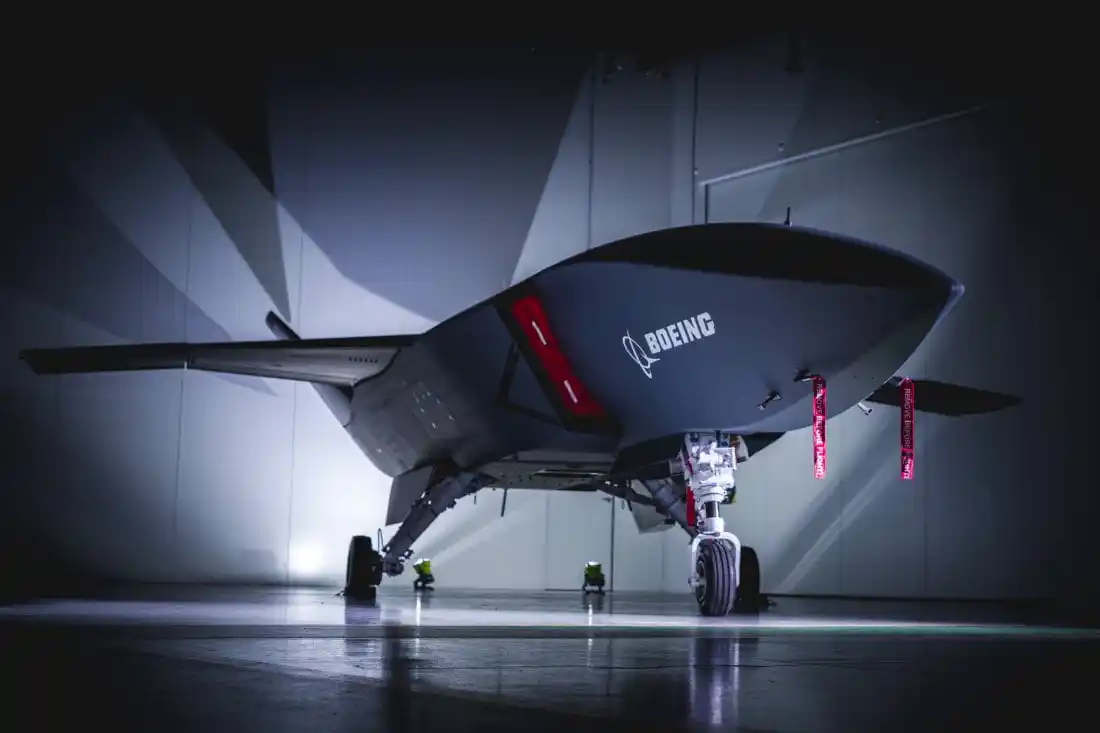
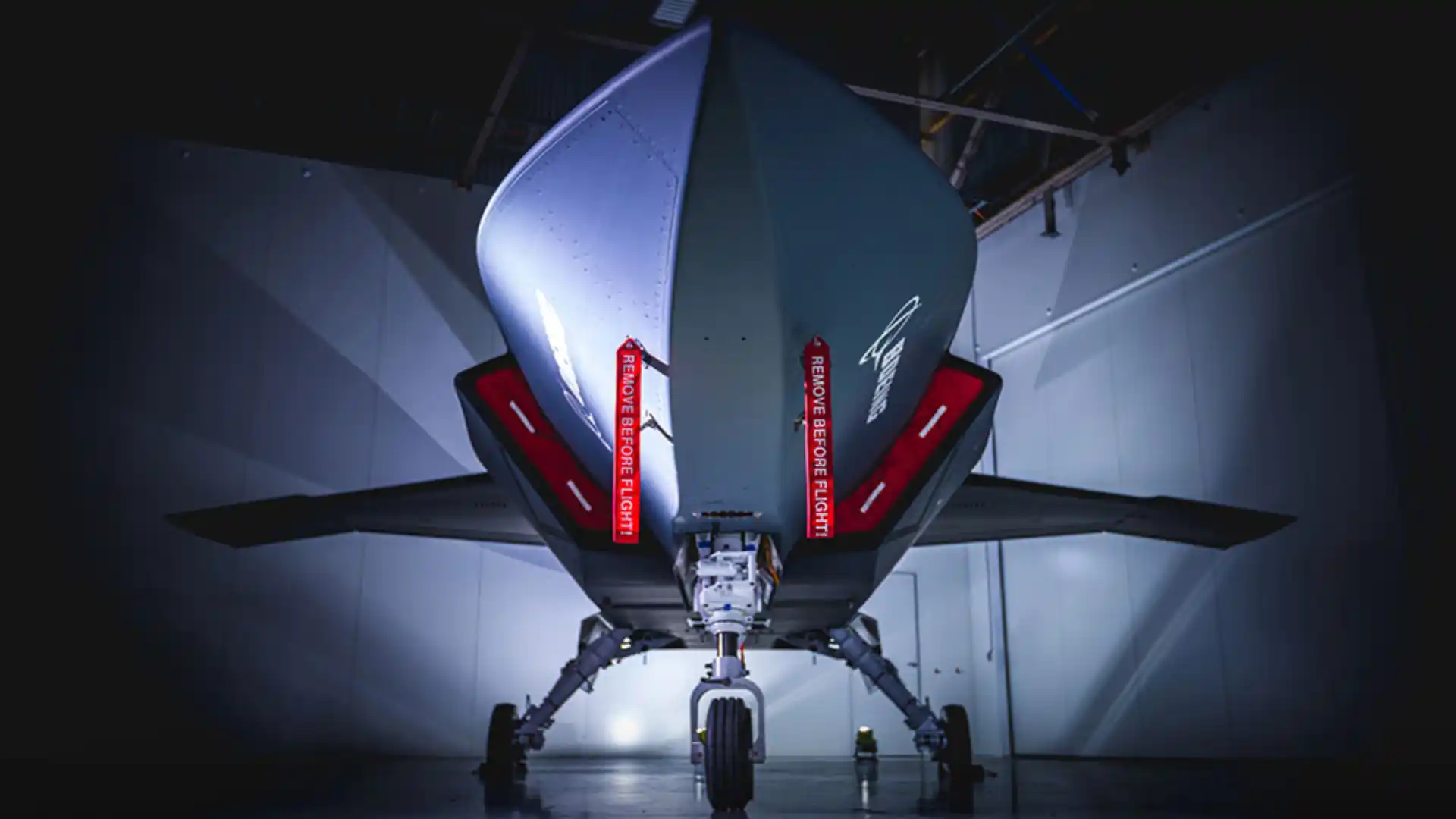
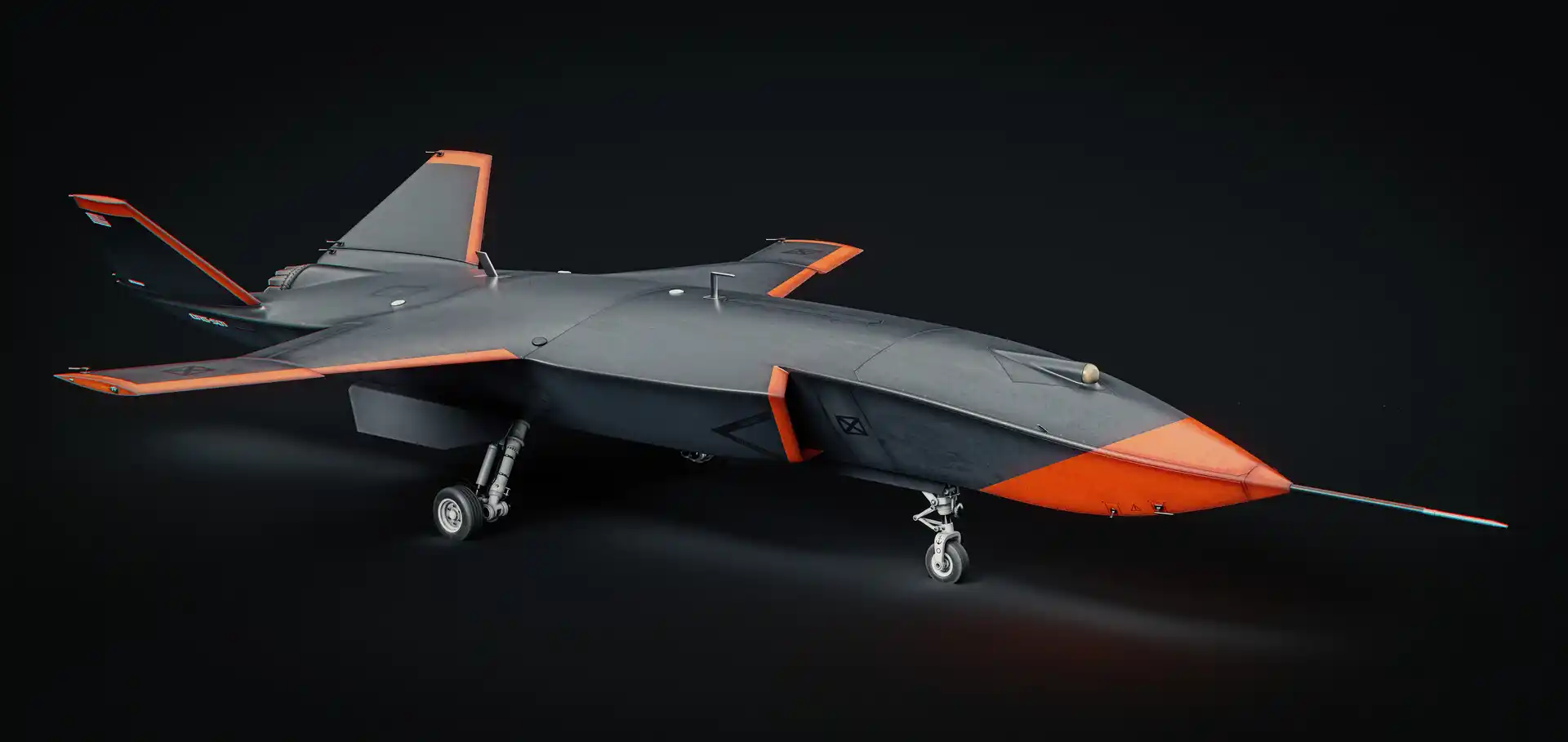
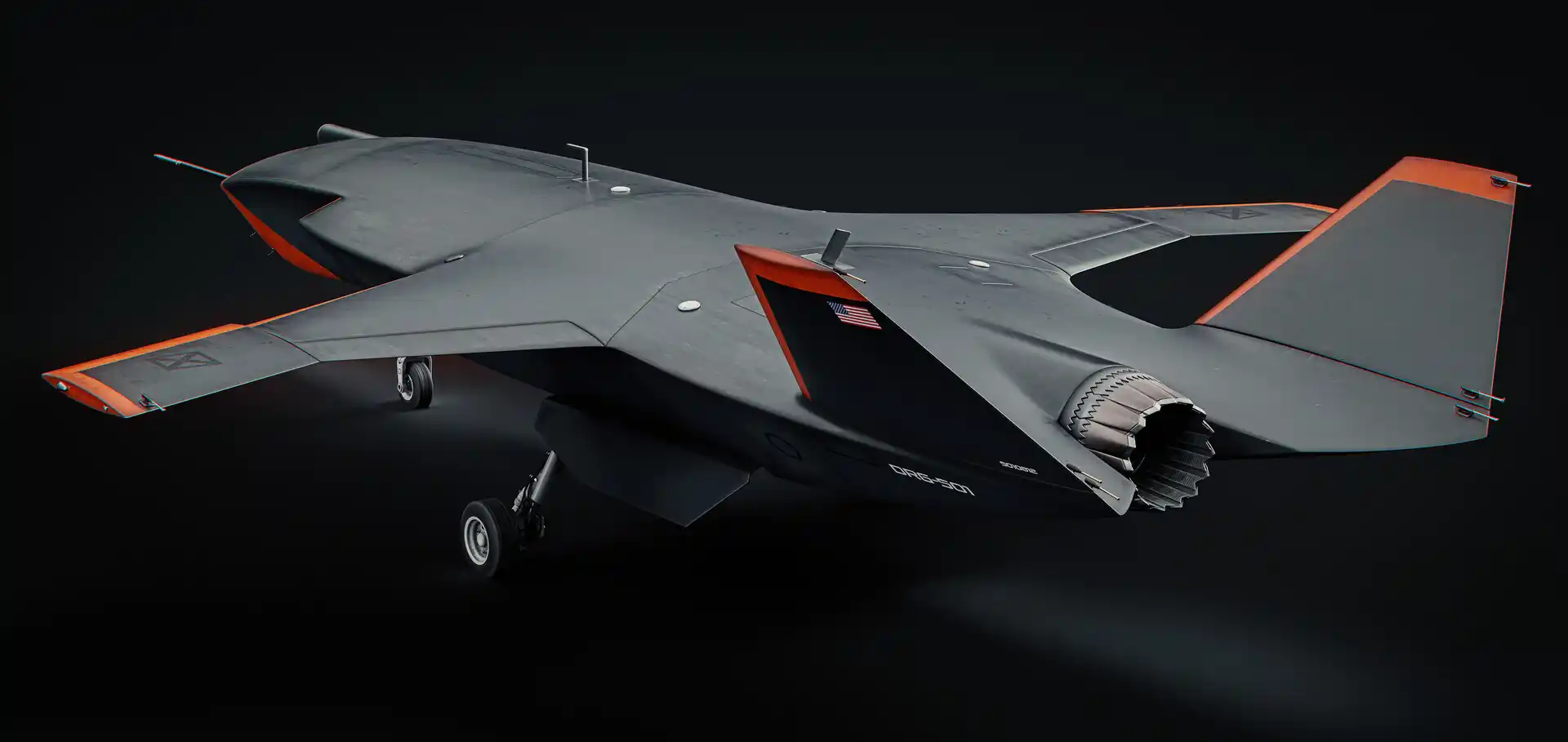
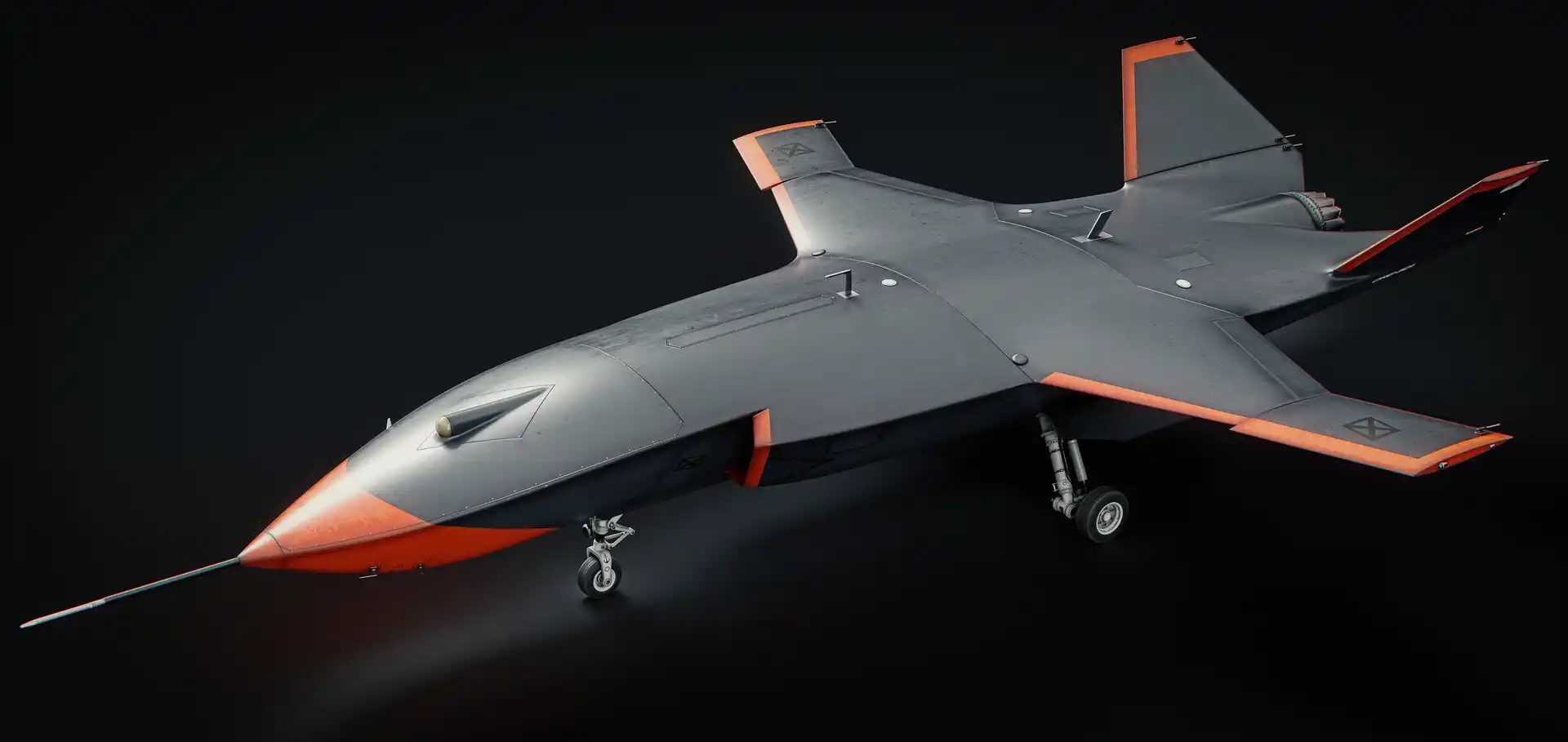
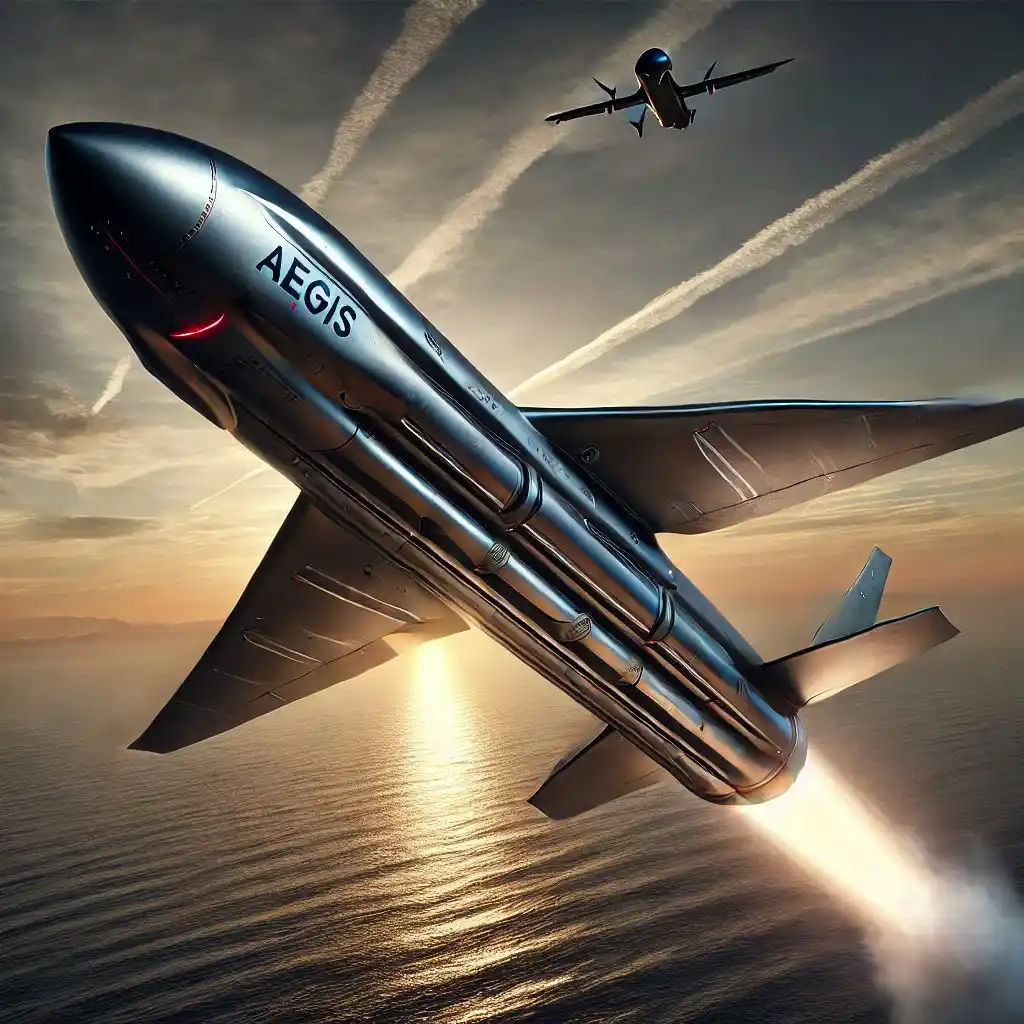
14. Related Content:
Title: @LucasBotkin @TuckerCarlson “Lucas, don’t forget to send Joe Rogan your videos! He’s tough like you!” https://x.com/SkillsGapTrain/status/1860460792996307154
Title: @elonmusk “It’s great to see you voicing your opinion on next-generation AI-enabled military aerospace technology.”https://x.com/SkillsGapTrain/status/1860579889188892768
Title: @elonmusk “Elon, the Boeing MQ-28 Ghost Bat, it’s not armed! Is it Woke!?”https://x.com/SkillsGapTrain/status/1860582570909458742
Title: “From Science Fiction to Science Reality: Crafting a Humanity-Centric AGI Future” https://x.com/SkillsGapTrain/status/1860214722949190008
Title: “Project Arctic Arrow: Securing NATO’s Sovereignty with Transoceanic Aerospace Innovation from SpaceX & Alberta” https://x.com/SkillsGapTrain/status/1857500853453603278
Title: “The Return of the Arrow: Canada’s Next Generation Hybrid Ground-Effect Missile for the 21st Century” https://x.com/SkillsGapTrain/status/1857466940152741997
Title: “Designing the Superior Fighting Force for the 21st Century: Integrating Blockchain Technology, Artificial Intelligence, Engineering Innovations, & Modern Military Strategies” https://x.com/SkillsGapTrain/status/1844981829750665720
Title: “Unmasking Global Titans: How China and Russia’s Industrial Economy Exposes Western GDP Illusions” https://x.com/SkillsGapTrain/status/1848150805079081305
Title: “Decoding the Security Enigma: An Analytical Examination of Justin Trudeau’s Governance and Canada’s” https://x.com/SkillsGapTrain/status/184661748535050243
Title: “Human and Autonomous Synergy in Modern Warfare: Strategic Solutions for Canada’s Defense Vulnerabilities” https://x.com/SkillsGapTrain/status/1856124770317734244
Title: “The Universal Language of Knowledge: AI, Censorship, & the Future of Technological Progress” https://x.com/SkillsGapTrain/status/1855229889068068912
Title: “The Ghost in the Machine and the Spectre of Dystopia: Comparing Transhumanist Visions in Eastern and Western Science Fiction” https://skillsgaptrainer.com/ghost-in-the-machine-spectre-of-dystopia/
Title: “Navigating the Dystopian Singularity: Shaping TNG-Inspired Future Amidst Colliding Dystopias” https://x.com/SkillsGapTrain/status/1858067423959629829
Title: “The Great Filter Ahead: Engineering a Pathway to Complex Civilization Survival and Overcoming Cosmic Hurdles” https://skillsgaptrainer.com/the-great-filter-ahead-engineering-a-pathway/
Title: “Echoes of the Past: The Best of Two Worlds” https://skillsgaptrainer.com/echoes-of-the-past-the-best-of-two-worlds/
Title: “Charting the Course: Realigning the AI Safety Board for a Future Forged in Innovation and Exploration” https://skillsgaptrainer.com/charting-the-course-realigning-the-ai-safety-board/
Title: “Echoes of the Future: How Star Trek’s Vision Mirrors Our Reality” https://skillsgaptrainer.com/echoes-of-the-future/
Title: “Unleashing the Titans: Why X, SpaceX, Tesla, Apple, Nvidia, Google, OpenAI, Amazon, Lockheed Martin” https://skillsgaptrainer.com/unleashing-the-titans/
Title: “Elon, the Boeing MQ-28 Ghost Bat, it’s not armed! Is it Woke!?”https://x.com/SkillsGapTrain/status/1860582570909458742
Title: “It’s great to see you voicing your opinion on next-generation AI-enabled military aerospace technology.”https://x.com/SkillsGapTrain/status/1860579889188892768
Title: “Ghost Bat Is An Aircraft Like No Other” https://youtu.be/rxJQLI_OEnk?feature=shared
Title: “The Ghost Bat Drone – Boeing Australia’s New Secret Weapon | Talking Tactics with Mel Pikos” https://youtu.be/CWO9u3qdsKs?feature=shared
Title:“The MQ-28A Ghost Bat, Unmanned Systems and the Future of Australian Air Power” https://youtu.be/SrPIoBSIcrc?feature=shared
Title: “Ghost Bat Is An Aircraft Like No Other” https://youtu.be/rxJQLI_OEnk?feature=shared
Title: “The Ghost Bat Drone – Boeing Australia’s New Secret Weapon | Talking Tactics with Mel Pikos” https://youtu.be/CWO9u3qdsKs?feature=shared
Title: “The MQ-28A Ghost Bat, Unmanned Systems and the Future of Australian Air Power” https://youtu.be/SrPIoBSIcrc?feature=shared
To see our Donate Page, click https://skillsgaptrainer.com/donate
To see our YouTube Channel, click https://www.youtube.com/@skillsgaptrainer